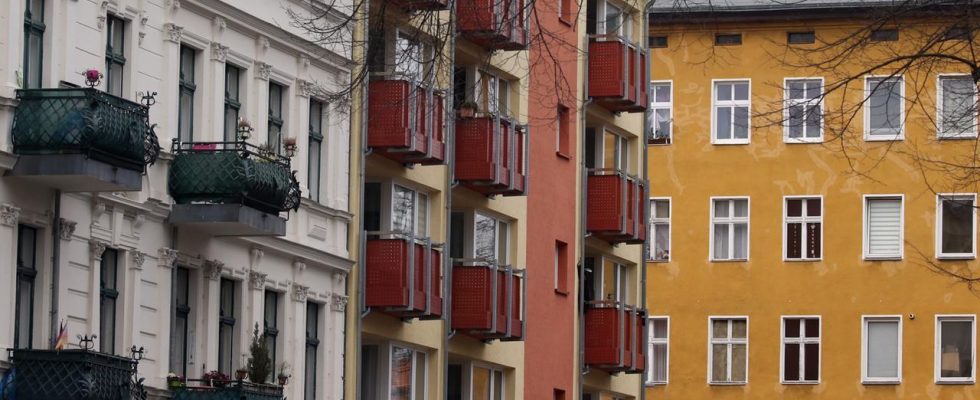According to the Tenants’ Association, more than seven million households are overwhelmed by their housing costs. This is also due to the rapidly increasing energy costs. The president of the association speaks of “alarming numbers”.
In Germany, about every third rental household is overburdened with housing costs. More than three million households pay more than 40 percent of their net income for cold rent and heating costs, according to a study presented today by the German Tenants’ Association (DMB). In another 4.3 million households, these costs accounted for between 30 and 40 percent of their income.
Tenants are considered overburdened if they have to spend more than 30 percent of their income on housing costs. The tenants’ association assumes that there are a total of 21 million households in Germany in which people live for rent. A total of more than seven million households are overburdened by their housing costs.
The Federal Statistical Office, on the other hand, only speaks of “overburdening” by housing costs if rental expenses exceed 40 percent of income. The statistics office has not yet published figures for 2022. According to the Tenants’ Association, tenants recently spent an average of 28 percent of their income on housing.
Expenditure on thermal energy doubled
According to the tenants’ association, almost half of the 21 million tenant households belong to the lowest three income brackets, which have an average of 1709 euros a month at their disposal. The significantly higher burden on tenant households is also due to the sharp rise in energy prices last year. Accordingly, in 2021 tenants still had to spend 64 euros a month on heating energy, while spending on heating almost doubled in the following year, 2022, to an average of 123 euros a month.
“These are alarming numbers that should wake up even the last ones,” said association president Lukas Siebenkotten. It is gratifying that the traffic light is said to want to reduce the additional burden on tenants, at least when it comes to replacing the heating system. But that’s not enough from Siebenkotten’s point of view, the promised tenancy law reforms from the coalition agreement “must finally be implemented now,” he demands. The current data and figures were determined by the Öko-Institut on behalf of the tenants’ association.
1973 more than 700,000 completed Apartments
Pressure on rental prices is also triggered by the lack of living space. In times of tense real estate markets, significantly fewer apartments are currently being built in Germany than the average in recent decades. The federal government has set itself the target of 400,000 apartments per year, but it fell far short of it last year: only 295,300 apartments were completed in 2022 – i.e. 27 percent less than the average for the years 1950 to 2022, as the Federal Statistical Office announced today. Since building statistics began in 1950, an average of 405,000 new homes have been built each year.
The highest level to date was in 1973 with a good 714,200 apartments in the former Federal Republic. After German unification, 1995 was the record year with around 602,800 units in Germany as a whole. Very few apartments were completed in the course of the global financial market crisis in 2009: In the recession year at that time there were only 159,000. Well under 400,000 completed apartments are also expected for the current year – the construction industry is assuming at best 250,000 apartments.
Living space per capita increased by 37 percent
Despite all the debates about the housing shortage in Germany, people are living in more and more living space on average. With social change and increasing prosperity, the demands of people in Germany have increased over the years. “In the three decades since German unification alone, this development is clearly visible,” said the statistics office.
Mathematically, at the end of 2021, one person had an average of 47.7 square meters of living space and 2.3 living rooms. This corresponds to an increase in per capita living space of around 37 percent within 30 years: In 1991, according to the information, people still lived on average on 34.9 square meters of living space per capita and in 1.8 living rooms. The average size of an apartment increased from a good 82 square meters to a good 92 square meters of living space, the statisticians wrote.

